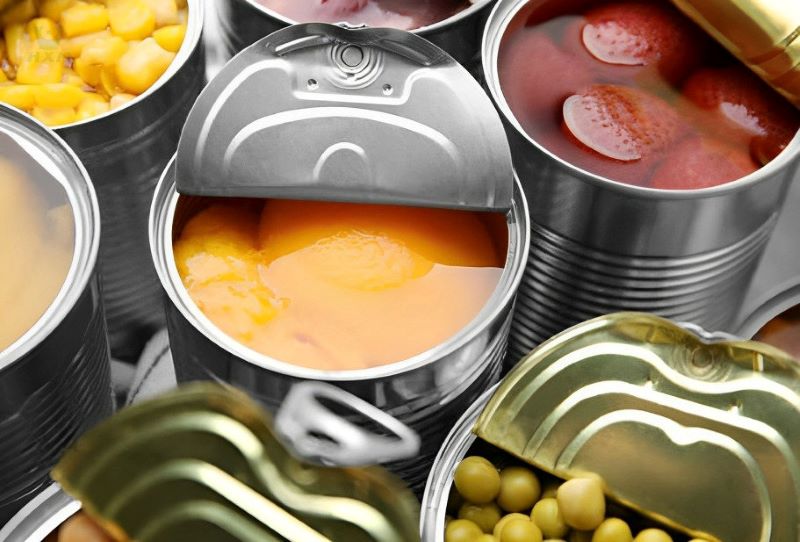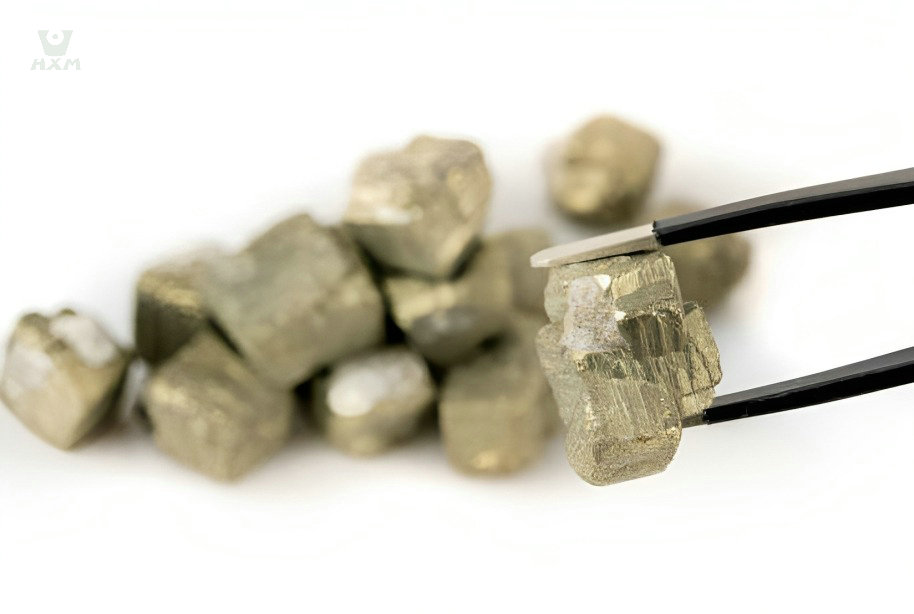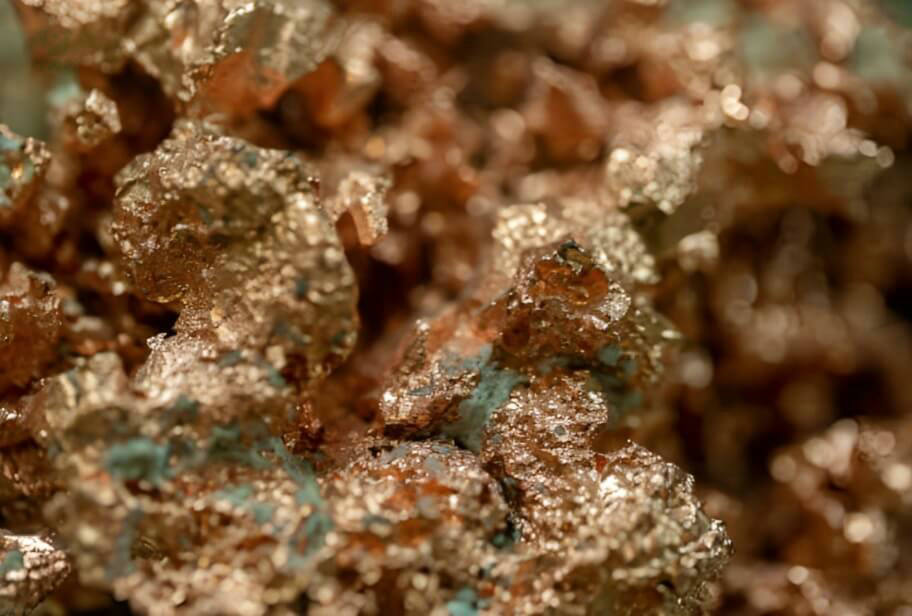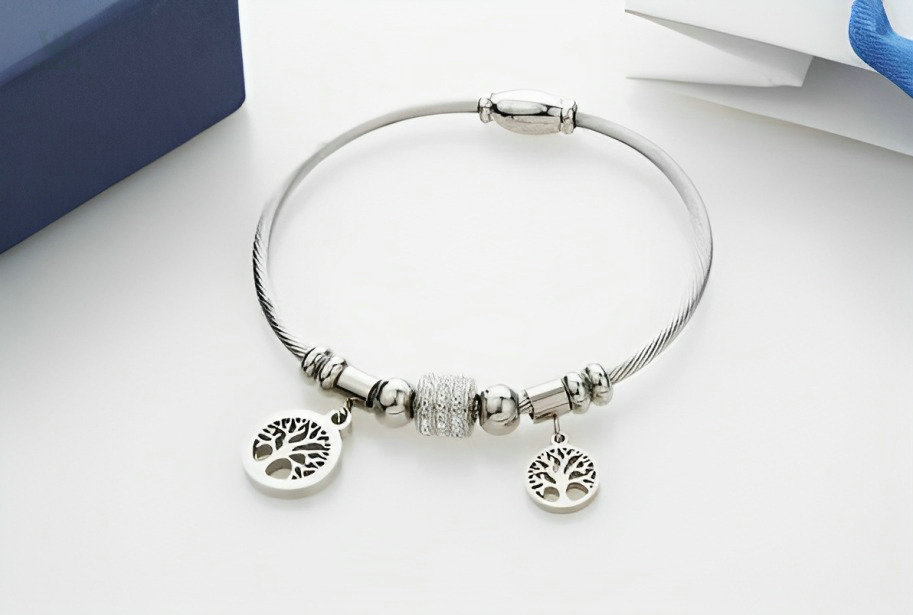The metals, unassuming on their own, find their true power when united into alloys – a fusion that has revolutionized our lives in more ways than we can imagine.
Think about it for a moment. From the moment you wake up to the time you go to bed, metal alloys are with you every step of the way. That stainless steel spoon you use for your morning cereal, the aluminum frame of your bicycle, the copper wires carrying electricity to your home, and even the titanium components in your smartphone – they are all products of the fascinating world of metal alloys.
In this exploration, we dive into the intriguing realm of 20 of the most common metal alloys, each with its own unique composition and set of remarkable properties.
Exploring the Alloys That Shape Our World: 20 Common Metal Alloys and Their Components
Steel: Primarily composed of iron and carbon.
Stainless Steel: Contains chromium and nickel to enhance corrosion resistance.
Copper Alloys: Typically include brass and bronze, consisting of copper and other metals.
Aluminum Alloys: Mainly composed of aluminum and other alloying elements.
Titanium Alloys: Contain titanium and other metals like aluminum and vanadium.
Nickel-Based Alloys: Primarily composed of nickel, chromium, and iron.
Lead-Tin Alloys: Contain lead and tin.
Indium Alloys: Include indium and other metals.
Niobium-Titanium Alloys: Comprise niobium and titanium.
White Gold Alloys: Typically made of gold, nickel, and silver.
Cobalt Alloys: Contain cobalt and other metals.
Chromium Alloys: Mainly composed of chromium and other metals.
Zirconium Alloys: Include zirconium and other metals.
Vanadium Alloys: Contain vanadium and other metals.
Molybdenum Alloys: Typically comprise molybdenum and other metals.
Aluminum Bronze: Mainly contain aluminum, copper, and other metals.
Cerium-Lanthanum Alloys: Include cerium, lanthanum, and other metals.
Tin-Aluminum Alloys: Contain tin and aluminum.
Tungsten Carbide: Primarily composed of tungsten and carbon.
Molybdenum Palladium Alloys: Include molybdenum, palladium, and other metals.
These are some common metal alloys and their components. Each alloy possesses unique properties and finds applications in various industrial and everyday life contexts, contributing significantly to our modern world.
| Alloy | Components |
|---|---|
| Steel | Iron (Fe) + Carbon (C) |
| Stainless Steel | Chromium (Cr) + Nickel (Ni) |
| Copper Alloys | Copper (Cu) + Other Metals |
| Aluminum Alloys | Aluminum (Al) + Alloying Elements |
| Titanium Alloys | Titanium (Ti) + Aluminum (Al) + Vanadium (V) |
| Nickel-Based Alloys | Nickel (Ni) + Chromium (Cr) + Iron (Fe) |
| Lead-Tin Alloys | Lead (Pb) + Tin (Sn) |
| Indium Alloys | Indium (In) + Other Metals |
| Niobium-Titanium Alloys | Niobium (Nb) + Titanium (Ti) |
| White Gold Alloys | Gold (Au) + Nickel (Ni) + Silver (Ag) |
| Cobalt Alloys | Cobalt (Co) + Other Metals |
| Chromium Alloys | Chromium (Cr) + Other Metals |
| Zirconium Alloys | Zirconium (Zr) + Other Metals |
| Vanadium Alloys | Vanadium (V) + Other Metals |
| Molybdenum Alloys | Molybdenum (Mo) + Other Metals |
| Aluminum Bronze | Aluminum (Al) + Copper (Cu) + Other Metals |
| Cerium-Lanthanum Alloys | Cerium (Ce) + Lanthanum (La) + Other Metals |
| Tin-Aluminum Alloys | Tin (Sn) + Aluminum (Al) |
| Tungsten Carbide | Tungsten (W) + Carbon (C) |
| Molybdenum Palladium Alloys | Molybdenum (Mo) + Palladium (Pd) + Other Metals |
-Alloyours metal alloy manufacturers
what is metal alloys?
Metal alloys are composite materials that result from the combination of two or more metallic elements or substances, typically including a base metal and alloying agents. These alloys are meticulously crafted and engineered by metal alloy manufacturers who carefully select the constituent elements to achieve specific properties and characteristics. The resulting alloy possesses a unique set of attributes that distinguish it from pure metals.
Importance of Metal Alloys
- Enhanced Strength: One of the primary reasons for the importance of metal alloys is their exceptional strength. Through the precise combination of metals, alloy manufacturers create materials that exhibit superior mechanical properties, making them ideal for a wide range of applications, from construction and aerospace to automotive industries.
- Improved Corrosion Resistance: Metal alloys are engineered to resist corrosion and degradation when exposed to harsh environmental conditions. This resistance to corrosion is crucial for structures, machinery, and components intended for long-term use, such as bridges, pipelines, and industrial equipment.
- Tailored Electrical and Thermal Conductivity: Metal alloys offer the advantage of tailoring their electrical and thermal conductivity to specific requirements. This versatility is essential in electrical engineering, where alloys are utilized to conduct or insulate electricity as needed.
- Customized Appearance and Aesthetic Appeal: In industries like jewelry and design, metal alloys are crafted to provide distinct appearances and aesthetic qualities that pure metals cannot achieve. White gold, for instance, is a popular choice in the jewelry industry, combining the beauty of gold with the durability of nickel and silver, created by skilled metal alloy manufacturers.
- Cost-Effective Solutions: Metal alloys often offer cost-effective solutions due to their tailored properties. By reducing the need for large quantities of expensive metals, manufacturers can optimize performance while minimizing costs.
- Environmental Considerations: Many metal alloys are designed to meet environmental standards and reduce the environmental impact of various products and applications, such as lead-free alloys for water pipes.
In conclusion, metal alloys, meticulously crafted by metal alloy manufacturers, are pivotal materials that have revolutionized numerous industries and everyday life, owing to their tailored properties, cost-effectiveness, and environmental considerations. Their unique attributes and versatility make them essential components of modern engineering and innovation.
Timeline of Metal Alloys
Bronze
Bronze is one of the earliest alloys in human history, first appearing in ancient civilizations in 3500 BC. It is a mixture of copper and tin, which is not only harder, but also more suitable for tool and weapon making.
Copper Alloys
Copper alloys, such as brass and bronze, are made from a mixture of copper and other metals and were discovered as early as ancient civilizations. Brass is a mixture of copper and zinc, while bronze is a mixture of copper and tin.
Steel
Steel was discovered by ancient metallurgists in the 6th century BC. By adding carbon to iron, they improved its properties and created a harder material.
Aluminum Bronze
Composed of aluminum, copper and other metals, aluminum bronze is a product of ancient civilizations and was used to make utensils and ornaments.
Lead-Tin Alloys
Lead-tin alloys were discovered in ancient times and consist of a mixture of lead and tin. These alloys have a low melting point and are easy to work with.
Stainless Steel
First made in the early 1900s, stainless steel improves the corrosion resistance of steel by adding chromium and nickel.
White Gold Alloys
White Gold Alloys were invented in the late 19th century to provide an alternative precious metal for jewelry. It usually includes gold, nickel and silver.
Aluminum Alloys
Aluminum alloys became widely used in the early 1900s and are based on aluminum with other alloying elements mixed in to provide lightness and strength.
Indium Alloys
Indium alloys containing indium and other metals were used at various times in applications such as semiconductors and high temperature lubricants.
Chromium Alloys
Chromium alloys are composed primarily of chromium and other metals and are used for high temperature and high strength applications.
Tin-Aluminum Alloys
Tin-Aluminum Alloys consist of tin and aluminum with specific electrical and thermal properties and are used in electronic applications.
Tungsten Carbide
Tungsten Carbide consists primarily of Tungsten and Carbon and is used in cutting tools and abrasive applications.
Vanadium Alloys
Vanadium alloys contain vanadium and other metals and are used for alloy strengthening and high strength applications.
Zirconium Alloys
Zirconium alloys are made from zirconium and other metals and are used in nuclear energy and chemical applications.
Cerium-Lanthanum Alloys
Cerium, lanthanum and other metals used in catalysts and battery applications.
Molybdenum Alloys
Molybdenum alloys typically include molybdenum and other metals and are used in high temperature and corrosion resistant applications.
Niobium-Titanium Alloys
Niobium-Titanium alloys consist of Niobium and Titanium and are used in superconducting magnets and nuclear reactor applications.
Titanium Alloys
A product of the mid-20th century, titanium alloys are used primarily in aerospace and medical applications and are popular for their high strength and light weight.
Molybdenum Palladium Alloys
Molybdenum-Palladium alloys consist of molybdenum, palladium and other metals and are used for electronic applications and alloy strengthening.
Nickel-Based Alloys
Nickel-based alloys were introduced in the mid-20th century for high-temperature and corrosion-resistant applications such as aircraft engines and nuclear power plants.
-Alloyours metal alloy manufacturers
specification of metal alloys

-Alloyours metal alloy manufacturers
bronze
Specific Components of Bronze
Bronze is an alloy primarily composed of copper (Cu) and tin (Sn). Typically, bronze consists of approximately 80% to 90% copper and 10% to 20% tin. This particular combination of metals gives bronze its unique properties.
Notable Properties and Characteristics of Bronze
- Corrosion Resistance: Bronze has a high resistance to corrosion in most environments, making it an ideal choice for applications in marine environments and outdoor sculptures.
- High Thermal Conductivity: Bronze possesses excellent thermal conductivity, which is beneficial for producing cookware and musical instruments, such as copper pots and brass instruments.
- Mechanical Strength: Bronze alloys are relatively hard and are used in the manufacturing of durable tools and sculptures.
- Aesthetic Value: Bronze has a distinct metallic luster, making it a preferred choice for artistic works and decorative items.
Application of Bronze
- Art and Sculpture: Bronze is a popular choice for sculptors due to its high malleability, corrosion resistance, and aesthetic appeal, allowing artists to create impressive works of art.
- Musical Instruments: Brass instruments like trumpets and trombones, as well as percussion instruments like cymbals and gongs, are often made of bronze to achieve desirable sound quality and durability.
- Maritime Use: Due to its corrosion resistance, bronze is used in the manufacture of ship components, anchors, and rudders to withstand the harsh corrosion-prone marine environment.
- Ornamental and Decorative Items: Bronze-made decorative items, including sculptures, jewelry, and historical artifacts, are highly regarded for their aesthetic and historical significance.
Bronze, with its diverse applications and unique characteristics, represents a remarkable achievement in ancient engineering and continues to play a crucial role in various fields today.

-Alloyours metal alloy manufacturers
Specific Components of Copper Alloys
Copper alloys are a diverse group of materials, and their specific components can vary. However, they are primarily composed of copper (Cu) as the base metal, with the addition of other elements such as zinc (Zn), tin (Sn), nickel (Ni), aluminum (Al), and more. The choice of alloying elements is made to achieve specific properties tailored to different applications.
Notable Properties and Characteristics of Copper Alloys
- Excellent Conductivity: Copper is one of the best conductors of electricity, making copper alloys essential in electrical and electronic applications.
- High Thermal Conductivity: These alloys also possess excellent thermal conductivity, which is valuable for heat exchangers and cooling systems.
- Corrosion Resistance: Many copper alloys are highly resistant to corrosion, making them suitable for plumbing, architectural applications, and marine environments.
- Malleability and Ductility: Copper alloys can be easily shaped, making them ideal for applications that require intricate designs, such as ornamental work.
- Antimicrobial Properties: Some copper alloys, like brass, have antimicrobial properties, which have led to their use in healthcare settings and touch surfaces.
Application of Copper Alloys
- Electrical Wiring: Copper is a primary component in electrical wiring due to its exceptional electrical conductivity, ensuring efficient energy transmission.
- Plumbing: Copper and copper alloys like brass are used in plumbing systems for their corrosion resistance, ensuring clean and safe water supply.
- Architecture: Copper alloys are employed for architectural elements such as roofing, facades, and decorative features, adding an aesthetic appeal to buildings.
- Heat Exchangers: Metal alloy manufacturers produce copper-nickel alloys, which are used in heat exchangers for their excellent thermal conductivity and resistance to corrosion in marine environments.
- Musical Instruments: Brass, a copper-zinc alloy, is a common choice for musical instruments like trumpets and saxophones due to its malleability and acoustic properties.
Metal alloy manufacturers play a pivotal role in producing copper alloys tailored to specific applications, ensuring that these materials meet the stringent requirements of various industries.

-Alloyours metal alloy manufacturers
Specific Components of Steel
Steel is an alloy primarily composed of iron (Fe) with a specific amount of carbon (C). The amount of carbon in steel typically ranges from 0.2% to 2.1%, but it can also contain other alloying elements like chromium (Cr), nickel (Ni), and manganese (Mn) in various proportions. The choice of alloying elements and carbon content influences the specific properties of steel, making it versatile and suitable for different applications.
Notable Properties and Characteristics of Steel
- Exceptional Strength: Steel is known for its high tensile strength, making it suitable for structural applications and the manufacturing of machinery and equipment.
- Versatility: Steel is highly versatile, with different grades designed to excel in specific applications, such as stainless steel for its corrosion resistance or high-speed tool steel for cutting tools.
- Ductility and Toughness: Steel is ductile and tough, allowing it to withstand heavy loads and absorb energy without breaking.
- Corrosion Resistance: Stainless steel, in particular, offers excellent resistance to corrosion and staining.
- Heat Resistance: Alloyed steels can maintain their structural integrity even at high temperatures, which is essential in applications like the aerospace and automotive industries.
Application of Steel
- Construction: Steel is a foundational material in construction, used for building structures such as skyscrapers, bridges, and residential houses. It provides the required strength and durability.
- Automotive Manufacturing: The automotive industry heavily relies on steel for making vehicle bodies, chassis, and engine components, as it offers the strength and crash resistance necessary for safety.
- Machinery and Equipment: Steel is used in manufacturing heavy machinery, industrial equipment, and tools for its exceptional strength and wear resistance.
- Aerospace: High-strength, heat-resistant steel alloys are vital in the aerospace industry for constructing aircraft and spacecraft.
- Cutting Tools: Steel is a critical component in the production of cutting tools like drill bits, saw blades, and milling cutters.
Metal alloy manufacturers play a crucial role in producing steel alloys with specific compositions tailored to meet the needs of various applications, ensuring the highest quality and performance.

-Alloyours metal alloy manufacturers
Specific Components of Aluminum Alloys
Aluminum alloys are primarily composed of aluminum (Al) as the base metal, with the addition of other alloying elements to enhance specific properties. Common alloying elements include copper (Cu), silicon (Si), magnesium (Mg), and zinc (Zn). The choice of alloying elements and their proportions varies to create different aluminum alloy grades optimized for diverse applications.
Notable Properties and Characteristics of Aluminum Alloys
- Lightweight: Aluminum is exceptionally lightweight, making aluminum alloys ideal for applications where weight reduction is critical, such as in the aerospace and automotive industries.
- Corrosion Resistance: Aluminum alloys naturally form a protective oxide layer that provides excellent corrosion resistance, making them suitable for outdoor and marine applications.
- Good Thermal and Electrical Conductivity: Aluminum alloys have good thermal and electrical conductivity, which is essential in applications like heat exchangers and electrical conductors.
- High Strength-to-Weight Ratio: Some aluminum alloys, like 7075 and 6061, offer high strength-to-weight ratios, making them suitable for structural components in aerospace and sports equipment.
- Machinability: Aluminum alloys are easy to machine, making them versatile for various manufacturing processes.
Application of Aluminum Alloys
- Aerospace: Aluminum alloys are extensively used in aircraft structures and components due to their lightweight properties. Manufacturers rely on aluminum alloys to reduce fuel consumption and enhance aircraft performance.
- Automotive: The automotive industry utilizes aluminum alloys for lightweight body panels, engine components, and wheels to improve fuel efficiency and overall vehicle performance.
- Construction: Aluminum alloys find applications in the construction of lightweight yet durable structures like skyscrapers, bridges, and facades.
- Consumer Electronics: The lightweight and conductive properties of aluminum alloys are essential in manufacturing electronics like laptops, smartphones, and tablets.
- Packaging: Aluminum alloys are employed in packaging materials, such as aluminum cans and foils, for their corrosion resistance and ability to preserve the freshness of food and beverages.
Metal alloy manufacturers play a crucial role in producing a wide range of aluminum alloys tailored to meet the specific needs of different industries, ensuring that the alloys meet stringent quality standards and performance requirements.
-Alloyours metal alloy manufacturers
Indium Alloys
Specific Components of Indium Alloys
Indium alloys typically contain indium (In) as the primary component, often combined with other metals to enhance specific properties. Common alloying elements include gallium (Ga), tin (Sn), and bismuth (Bi). The choice of alloying elements and their proportions varies to create different indium alloy compositions suitable for specific applications.
Notable Properties and Characteristics of Indium Alloys
- Low Melting Point: Indium alloys have notably low melting points, making them ideal for applications that require materials with low-temperature soldering and joining capabilities.
- Excellent Wetting Properties: Indium alloys exhibit excellent wetting properties, which allow them to form strong bonds with various materials, including metals, ceramics, and glasses.
- Low Toxicity: Indium alloys are generally non-toxic, making them suitable for applications in the electronics and healthcare industries.
- Thermal and Electrical Conductivity: Indium alloys also possess good thermal and electrical conductivity, making them useful in heat transfer applications and electrical interconnects.
Application of Indium Alloys
- Electronics Manufacturing: Indium alloys, such as indium-tin (In-Sn) solder, are widely used for electrical interconnections, soldering microelectronics, and creating reliable connections in integrated circuits.
- Aerospace and Avionics: Indium alloys play a crucial role in the aerospace industry for their low-temperature soldering capabilities, ensuring the integrity of delicate electronic components.
- Medical Devices: Indium alloys are used in medical devices and equipment for their non-toxic properties, making them safe for contact with human tissue and fluids.
- Semiconductor Manufacturing: Indium alloys are employed in semiconductor fabrication for creating precision connections and bonding semiconductor components.
- High-Performance Cooling Systems: Indium-based thermal interface materials are used in high-performance cooling systems for their excellent thermal conductivity, ensuring efficient heat dissipation in electronic devices.
Metal alloy manufacturers play a pivotal role in producing indium alloys with specific compositions tailored to meet the specific needs of different industries, ensuring that the alloys meet stringent quality standards and performance requirements.
Challenges and Innovations of metal alloys
Challenges Associated with Metal Alloys
- Cost and Availability: The production of certain alloying elements, such as rare earth metals in cerium-lanthanum alloys, can be expensive and limited in availability. This can pose challenges in maintaining a stable supply chain and controlling costs.
- Environmental Impact: Metal extraction and processing can have significant environmental impacts. Mining and refining activities, especially for alloys like chromium, can result in pollution and habitat disruption. Manufacturers are under pressure to adopt more sustainable practices.
- Recycling and Waste Management: Managing and recycling alloy materials can be complex. Developing efficient recycling processes for alloys like aluminum is essential to reduce waste and minimize the environmental footprint.
- Corrosion and Degradation: While many alloys, like stainless steel, are corrosion-resistant, they are not entirely immune. In harsh environments, these alloys can still corrode, leading to maintenance challenges.
Innovations and Developments
- Advanced Alloys for Aerospace: Metal alloy manufacturers are continually developing advanced alloys for aerospace applications, such as titanium alloys with improved strength-to-weight ratios. These alloys help reduce fuel consumption and enhance aircraft performance.
- Nanostructured Alloys: Innovations in nanostructured alloys have led to materials with enhanced mechanical properties. Nanostructured steel and aluminum alloys offer greater strength and durability for various applications.
- Green Alloys: There is a growing emphasis on creating more environmentally friendly alloys. Researchers are exploring "green alloys" with reduced carbon footprints and lower emissions during production.
- High-Entropy Alloys (HEAs): HEAs, composed of multiple elements in roughly equal proportions, have opened up new possibilities for customizing material properties. Researchers and manufacturers are experimenting with HEAs in aerospace, nuclear, and automotive applications.
- Recycling Technologies: Innovations in recycling technologies, such as advanced sorting and separation processes, are improving the efficiency of recycling aluminum, reducing waste, and decreasing energy consumption.
Metal alloy manufacturers are at the forefront of these innovations, working to address the challenges and produce alloys that meet the demands of modern applications while minimizing their environmental impact. They play a pivotal role in the development and deployment of these advanced materials, contributing to technological progress and sustainability in various industries.
conclusion
In conclusion, our exploration of metal alloys reveals their pivotal role in shaping the modern world. These engineered materials, meticulously crafted by metal alloy manufacturers, have become the cornerstone of technological and industrial progress. Key takeaways from this discussion are:
Diverse Applications: Metal alloys are versatile and find applications in various sectors, from aerospace and automotive industries to electronics, construction, and healthcare.
Unique Properties: Each alloy offers a distinct set of properties, whether it’s the lightweight strength of aluminum alloys, the corrosion resistance of stainless steel, or the low-temperature soldering capabilities of indium alloys.
Challenges and Innovations: While challenges like cost, environmental impact, and recycling persist, metal alloy manufacturers continue to drive innovations, creating advanced materials, green alloys, and recycling technologies that propel industries forward.
Understanding the significance of metal alloys in our modern world is paramount. It’s not merely a matter of material science; it’s a testament to human ingenuity and our quest for progress. These alloys enable us to build safer, more efficient, and environmentally sustainable structures, devices, and systems.
In a world driven by innovation and efficiency, the role of metal alloys in enhancing our quality of life cannot be overstated. As we continue to explore and develop new alloys, we move closer to achieving even greater feats in technology, industry, and sustainability. The dynamic interplay between science, engineering, and manufacturing has opened doors to possibilities that will shape our future.







